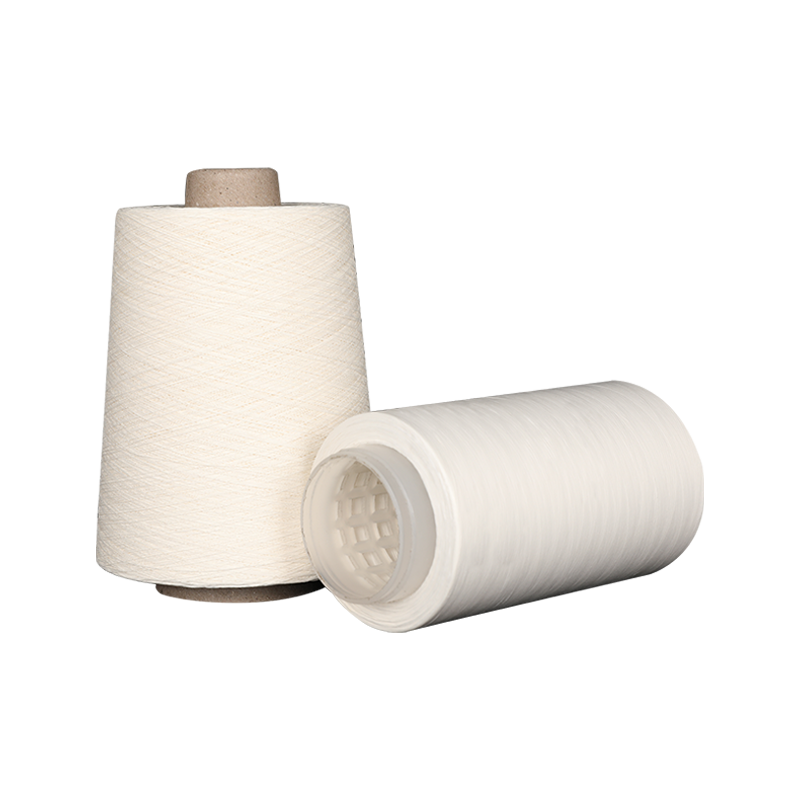As the textile industry leans toward sustainability and innovation, paper yarn has emerged as a fascinating alternative to traditional natural fibers like cotton and linen. But while its eco-friendly nature and unique texture are impressive, many consumers and manufacturers are asking the same question: how durable is paper yarn compared to cotton or linen?
What Is Paper Yarn?
Paper yarn is made by cutting high-quality wood pulp or recycled paper into narrow strips, which are then twisted into fine threads or filaments. Despite being made from paper—a material often considered fragile—this yarn is surprisingly strong and versatile, especially after being processed and twisted properly.
Modern production techniques improve its tensile strength, water resistance, and flexibility, making it suitable for weaving, knitting, and industrial applications. It is often used in home textiles, clothing, hats, bags, and even upholstery fabric.
Durability of Paper Yarn: Key Properties
1. Tensile Strength
Paper yarn may seem delicate at first glance, but it offers remarkable tensile strength, especially when tightly spun. High-grade paper yarns can be nearly as strong as cotton when dry. However, they tend to be less durable in wet conditions, as prolonged exposure to moisture can weaken the fiber and cause deformation unless the yarn is treated for water resistance.
Summary:
Paper Yarn: Strong when dry; weaker when wet unless treated.
Cotton: Strong when dry and retains moderate strength when wet.
Linen: Stronger than both cotton and paper yarn, especially in moisture-rich environments.

2. Abrasion Resistance
Compared to cotton and linen, paper yarn has lower resistance to abrasion. This makes it less ideal for garments or products that experience constant rubbing or friction, such as socks or jeans. However, it performs well in structured, low-friction applications, such as summer hats, decorative cushions, or woven furniture fabrics.
Summary:
Paper Yarn: Moderate abrasion resistance.
Cotton: Good resistance, suitable for everyday wear.
Linen: Very strong and wear-resistant, especially over time.
3. Shape Retention and Flexibility
Paper yarn has excellent shape retention, meaning it maintains its structure well—especially in woven or knitted designs. However, it lacks the elasticity of cotton or linen, which can stretch and return to shape more effectively. This makes paper yarn better suited to structured or stiff designs than flowy, flexible garments.
Summary:
Paper Yarn: Holds shape well, limited flexibility.
Cotton: Soft, stretchy, and flexible.
Linen: Naturally stiff, but softens with wear.
4. Resistance to UV and Mold
One of the underappreciated benefits of paper yarn is its natural resistance to UV rays and mold (especially after treatment). This makes it a good choice for outdoor applications, such as patio cushions, woven shades, or decorative outdoor textiles.
Summary:
Paper Yarn: Good UV and mildew resistance.
Cotton: Prone to fading and mildew.
Linen: Moderate resistance, better than cotton.
Is Paper Yarn Durable Enough for Everyday Use?
It depends on the application. While paper yarn may not replace cotton or linen in all categories, it excels in specific uses where breathability, structure, and sustainability matter more than flexibility or abrasion resistance. Examples include:
Summer fashion (hats, shoes, bags)
Home textiles (table mats, blinds, wall coverings)
Interior design (light upholstery, decorative panels)
With proper treatment, many of its natural limitations—such as water sensitivity—can be minimized, making it even more viable for broader use.
Paper yarn may not surpass cotton or linen in all aspects of durability, but it holds its own as a sustainable, stylish, and surprisingly strong material. While it may not be suitable for highly active or moisture-heavy applications, it shines in environments where structure, breathability, and eco-friendliness are key.
As textile innovation evolves, we can expect more enhanced versions of paper yarn—blended with other fibers or treated for greater resilience—making it an increasingly viable alternative in modern fabric design.